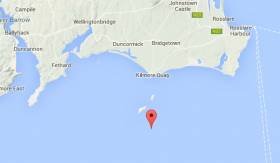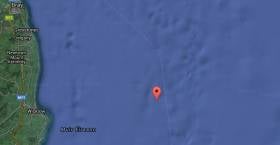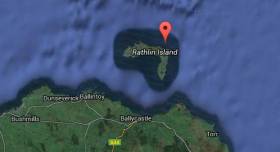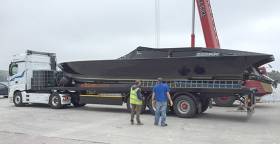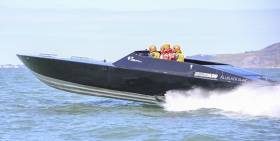Displaying items by tag: Team Hibernia
Hibernia Racing, The International Irish Marathon Offshore Powerboat Racing Team headed by driver and throttle man John Ryan are set to take on their toughest challenge to date; the Cowes Classic 2016 Offshore Powerboat Race. The race takes place this Sunday, September 4th, starting at Cowes on the Isle of Wight with 'Hibernia Racing' being the first Irish boat to ever enter the race.
The Hibernia team includes Phillip Fitzgibbon navigating, Denis Dillon dealing with logistics and on-board hydraulic monitoring. Jonathan Napier is co–driver, Jonathan was famously the last Concorde flight pilot.
The mechanics include Christoff, Piotr and Mark Soper from the boats engine manufacturer FPT.
 John Ryan driver and throttle man of Team Hibernia – realistic about chances in Cowes Photo: Afloat.ie
John Ryan driver and throttle man of Team Hibernia – realistic about chances in Cowes Photo: Afloat.ie
The team is also supported by Dingle's Tom Crean's lager, the Isle of Wight Distillery's Mermaid Gin and Henri Lloyd clothing.
The 200–mile classic has long been recognised as one of powerboating’s toughest challenges, it's the longest running offshore powerboat event in the world and comparisons have been made with motorsport events such as Le Mans and the Indy 500.
Around 20 boats are expected to be in the line-up for this high speed challenge including some boats with over 3000 hp available to drive their boats at speeds in excess of 210 km per hour.
Ryan is realistic about the teams chances saying that "we're in this to genuinely compete against the best teams and boats in the world, we know that our boat doesn't have the top speed or power of a lot of the other competitors but we have proven our overall reliability and high performance with our recent Round Ireland World record so hopefully at the end of the race we'll be up there with the best, remember to win you first have to finish!
Hibernia Round Ireland Powerboat Record Update: 17.00
Hibernia Round Ireland Powerboat Record Update: 15:34
Hibernia Round Ireland Powerboat Record Update: 14:30
Hibernia Round Ireland Powerboat Record Update: 12:56
CLICK HERE FOR LATEST
Team Hibernia are scheduled to start their Round Ireland Powerboat record challenge at 0500 on Sunday morning. They will depart Kinsale and head clockwise round Ireland. The 2009 record time to beat is 18 hours 38 minutes and 50 seconds. Read more about the challenge here. The team are targeting a 14–hour time. We will be following the boat on the spot tracker (below). See all updates on one handy link HERE
The Round Ireland Powerboat bid due to get underway this weekend arrived at its Kinsale departure point by truck this afternoon. The four man bid is scheduled for Sunday and the sleek aluminium craft must be back in the south coast harbour within 18 hours 38 minutes and 50 seconds to beat the seven–year–old record. Read more about the circumnavigation here
Round Ireland Powerboat Record Bid This Weekend
A bid to break the 2009 Round Ireland powerboat record will be made this weekend. Venture Cup entrant John Ryan and his Team Hibernia crew will make an attempt at the record on Sunday. Starting in Kinsale on the South Coast, Ryan and his four man crew will need to be back in the Munster harbour within 19 hours if they are to break the seven–year–old record set in a time of 18 hours 38 minutes and 50 seconds.
Hibernia Racing's 100 mph –ALLBLACK SL44 entry is built for marathon racing and has a range of 500–miles, making it possible for the circumnavigation to be made with just one refuel stop. The sleek aluminium built craft was testing in Cork Harbour a month ago and was powering around Dublin Bay in the past fortnight as preparation for the now cancelled Venture Cup.
The 2009 record holder Philip Fitzgibbon will be part of this weekend's attempt and joins the four–man crew as navigator. Sean McNamara and Denis Dillon complete the line–up.
'We''re going clockwise from Kinsale. I'm keen to get the Atlantic out of the way first', Ryan told Afloat.ie this afternoon.
Fitzgibbon and Mike Shanahan reclaimed their Round Ireland Powerboat Record powering over the Kinsale finish line to become the first team to set a sub 19–hour time for the circumavigation of Ireland in October 2009. The record was set in a 7.5 metre RIB powered by a 250hp engine.



























